NIL
Landry's executive order protects NIL deals; how UNO fixed budget deficit
Thanks to a new executive order from Gov. Jeff Landry, Louisiana colleges can now pay student athletes directly for name, image and likeness (NIL) deals. The order prohibits the use of state-allocated funds and will remain in effect until federal NIL legislation is enacted. The order after President Donald Trump halted plans to create a […]
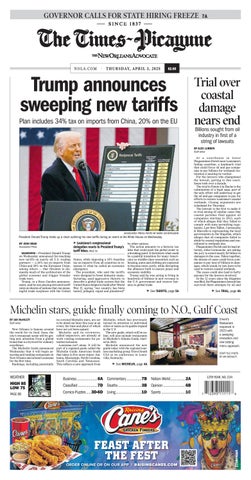


Thanks to a new executive order from Gov. Jeff Landry, Louisiana colleges can now pay student athletes directly for name, image and likeness (NIL) deals. The order prohibits the use of state-allocated funds and will remain in effect until federal NIL legislation is enacted.
The order after President Donald Trump halted plans to create a college sports commission.
Maddy Hudak, deputy editor for Tulane for Sports Illustrated, tells us more about this order and its suspected impacts.
About a year ago, the University of New Orleans said it would take steps to eliminate a $15 million deficit brought on by decades of low enrollment and other issues. And by the end of this semester, the budget was balanced, but not without its costs. There’s been layoffs, furloughs, the loss of some degree programs and the closing of Milneburg Hall, which needed significant repairs.
UNO President Kathy Johnson has been at the helm. She joined WWNO’s Bob Pavlovich to explain how they balanced the budget and what comes next for the institution.
One in three high school students report poor mental health, with half of teen girls saying they feel persistently sad or hopeless.
May is Mental Health Awareness Month, and one Louisiana organization is providing support for families facing emotional and mental health challenges. They’re also working to make sure adults are aware of the struggles and warning signs in our youth.
Rashain Carriere-Williams, executive director of Boys Town Louisiana, tells us more.
—
Today’s episode of Louisiana Considered was hosted by Adam Vos. Our managing producer is Alana Schreiber. We get production support from Garrett Pittman and our assistant producer Aubry Procell.
You can listen to Louisiana Considered Monday through Friday at noon and 7 p.m. It’s available on Spotify, the NPR App and wherever you get your podcasts. Louisiana Considered wants to hear from you!
Please fill out our pitch line to let us know what kinds of story ideas you have for our show. And while you’re at it, fill out our listener survey! We want to keep bringing you the kinds of conversations you’d like to listen to.
Louisiana Considered is made possible with support from our listeners. Thank you!
NIL
FSU football rival receives lawsuit over tampering accusations
Long gone were the days of under-the-table fast food bags filled with cash to entice top-tier recruits to join one football program or the other, or at least the college football world thought when introducing a way for athletes to benefit from their Name, Image, and Likeness (NIL) in 2021. The new NIL era has […]

Long gone were the days of under-the-table fast food bags filled with cash to entice top-tier recruits to join one football program or the other, or at least the college football world thought when introducing a way for athletes to benefit from their Name, Image, and Likeness (NIL) in 2021.
The new NIL era has introduced a wave of problems, litigation, and it is safe to say that the NCAA is still working out a solution on how to fairly compensate athletes and reduce tampering in what will likely be known as the “wild west” of college athletics in the years to come.
No program is immune to scandals with such a vast amount of revenue being poured through its locker room, but one Florida State rival seems to be on the brink of facing consequences after getting caught with its hand in the cookie jar.
The University of Wisconsin and its NIL collective filed an unprecedented lawsuit against the University of Miami Hurricanes in state circuit court on Friday, accusing the university of tortious interference, according to Ross Dellenger of Yahoo Sports.
The suit claims that Miami illegally poached defensive back Xavier Lucas, referred to in the filing as “Student-Athlete A,” while he was under contract with the Badgers.
“Miami interfered with UW-Madison’s relationship with Student-Athlete A (Lucas) by making impermissible contact with him and engaging in tampering.”
READ MORE: Three former Seminoles listed in ESPN’s NFL All Quarter Century Team
“Knowingly inducing” an athlete to have a change of heart and play for your school while they are currently under contract is a blatant violation of transfer practices and NCAA policies (in fact, the transfer portal was closed at the time of the violation). Although Wisconsin reportedly was hesitant to escalate the issue, the school said that it was “committed to ensuring integrity and fundamental fairness in the evolving landscape of college athletics.”
While the school won’t be pursuing any legal action against Lucas, the move could (and should) prompt a higher oversight at the program level from administrations that would like to keep their hands clean of the bad press, lawsuits, and relationship-breaking consequences that can arise as the country tries to paddle the murky waters of the new NIL era.
As for Miami? Well, some habits are hard to break.
READ MORE: Cornerback prospect shuts down recruitment, sticks with Florida State
Stick with NoleGameday for more FREE coverage of Florida State Football throughout the offseason
Follow NoleGameday on and Twitter, Facebook, Instagram, and TikTok
NIL
Maine closes out the high school softball season with MPA championships
The high school softball season around the country finally came to an end this past weekend with the Maine Principal Association (MPA) state championships. The four contests were played between St. Joseph’s College and the University of Maine. Four state title games took place from Classes A to D, with the MPA crowning champions in […]
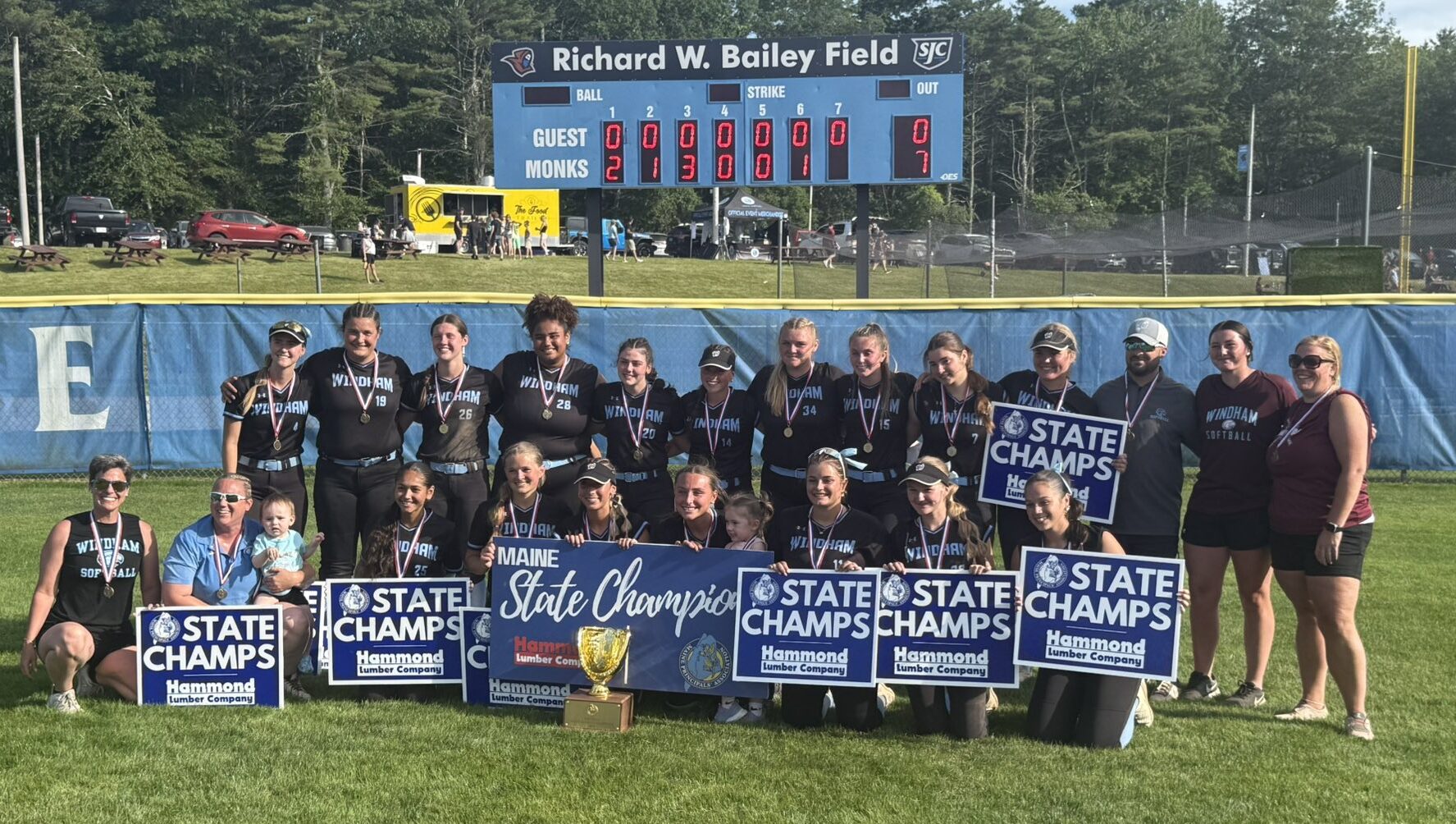
The high school softball season around the country finally came to an end this past weekend with the Maine Principal Association (MPA) state championships. The four contests were played between St. Joseph’s College and the University of Maine.
Four state title games took place from Classes A to D, with the MPA crowning champions in each classification.
In the Class A state championship tilt between Windham and Edward Little, the Eagles blanked the Red Eddies, 7-0, behind a strong pitching performance from senior hurler Kennedy Kimball. The pitcher went the distance, allowing just two mere hits and striking out a game-high 11.
Medomak Valley edging Hermon, 1-0, for the Class B state crown was the tightest contest in terms of scoring of any game out of the weekend. Panthers’ pitcher Sydney Nichols brought her best stuff in the circle, striking out 12, yielding just three hits and leading the program to their first state championship since 1995.
Another Maine state championship game that involved a stellar performance from their senior pitcher was Bucksport upending Hall-Dale, 6-2, for the Class C title. It was senior Natalie Simpson closing the door on the Bulldogs, with the pitcher pitching all seven frames, giving up four hits, two runs and fanning 12 batters along the way.
Lastly in the Class D state title tilt between Buckfield and Penobscot Valley, it would be the Bucks defeating the Howlers 5-0. Brittany Carrier belted a home run and Carmen Crocket pitched a nearly perfect game, going seven innings, one hit, no walks and striking out 16 batters. With the win, Buckfield notched the program’s 10th state championship.
The New England region has always been one of the final areas around the country to wrap up spring sports. Just last weekend, Connecticut held its state championship games.
NIL
UNC plan to pay players revenue, NIL after House settlement
UNC football coach Bill Belichick summer press conference UNC football coach Bill Belichick held a 20-minute press conference. He answered questions about outside “noise” and the roster. UNC athletes in football, men’s basketball, women’s basketball, and baseball will receive a share of revenue starting July 1st. UNC will increase its athletic scholarships from 338 to […]
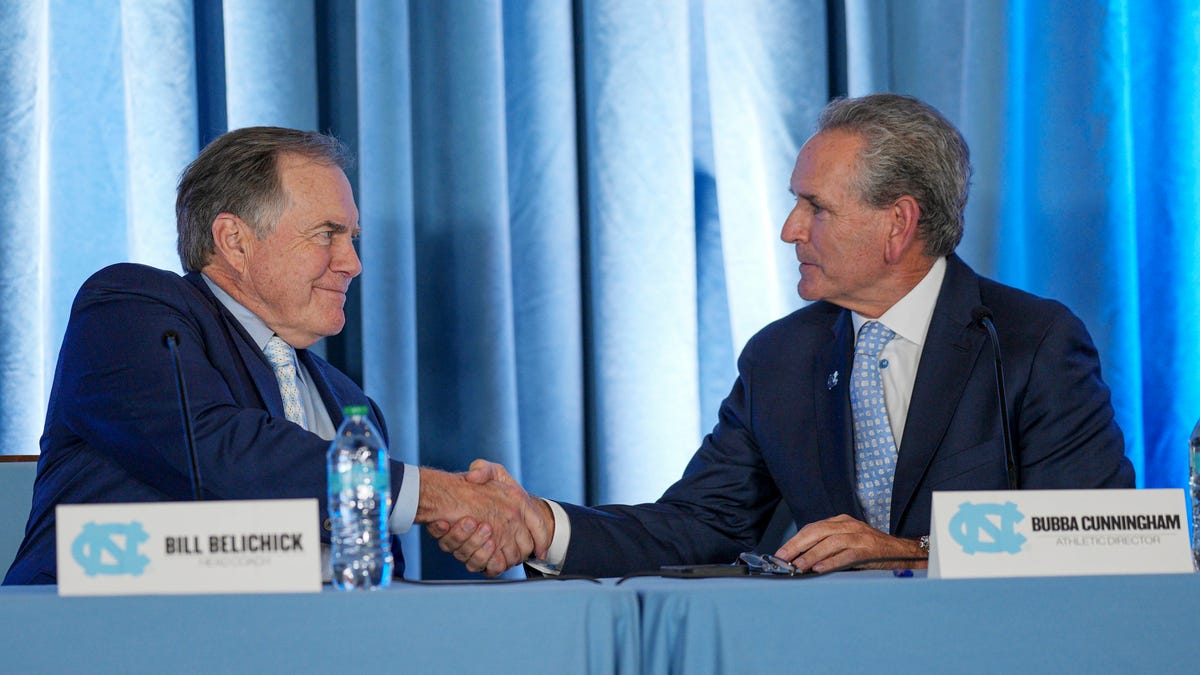
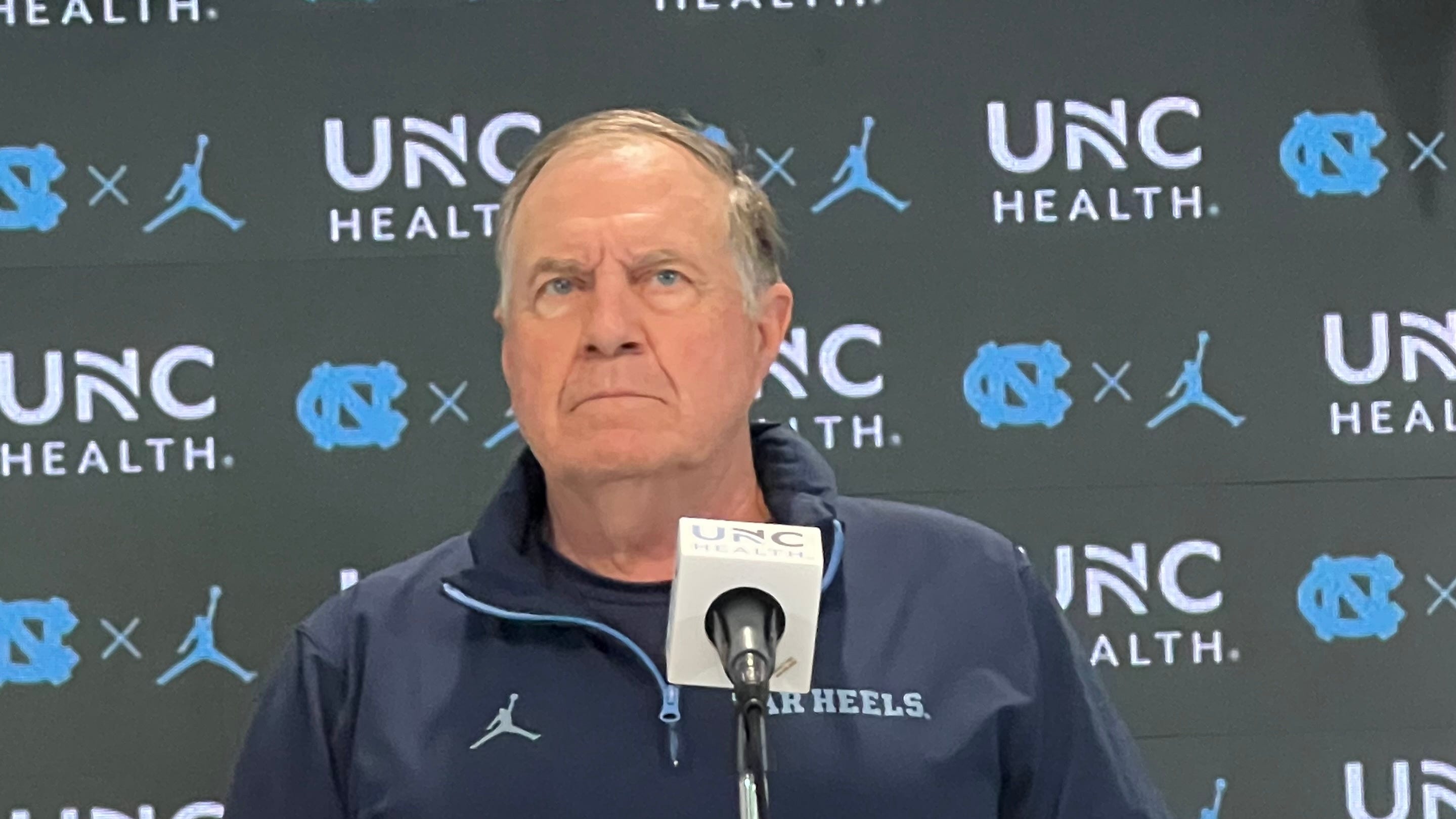
UNC football coach Bill Belichick summer press conference
UNC football coach Bill Belichick held a 20-minute press conference. He answered questions about outside “noise” and the roster.
- UNC athletes in football, men’s basketball, women’s basketball, and baseball will receive a share of revenue starting July 1st.
- UNC will increase its athletic scholarships from 338 to 532 across all sports.
- UNC is exploring new revenue streams like naming rights and sponsorships to offset increased costs.
University of North Carolina athletes will be paid revenue directly by the school, beginning July 1, in addition to income they already earn for use of their name, image and likeness.
UNC athletics director Bubba Cunningham outlined the university’s plan for the revenue sharing era in a letter posted on June 23. This follows the approval of the House vs. NCAA settlement on June 6, which moves college sports closer to a professional model. Schools opting into the format can pay athletes up to an annual cap of $20.5 million.
“This is a significant evolution that will change our department’s financial model while providing greater financial opportunities for Tar Heel student-athletes,” Cunningham said in a school-issued statement.
“At Carolina, we have been preparing for these changes for more than a year. We are fully committed to adapting to this new era and continuing to create outstanding championship experiences for our student-athletes across our 28-sport, broad-based program.”
UNC is among the schools positioning itself to share the full amount of revenue share to its athletes. Cunningham revealed how UNC’s athletics department plans to handle the changes.
“As we begin this new era, one thing won’t change: our dedication to excellence and winning in and outside of competition,” Cunningham said.
UNC will share most of $20.5 million with men’s basketball, football
Men’s basketball and football at UNC will receive a majority of the school’s $20.5 million in revenue sharing, according to Cunningham’s letter. Women’s basketball and baseball players will also get a cut of the revenue share, bringing UNC’s total to four sports. The rev-share cap will increase by 4% annually.
UNC scholarship increases for athletes
The settlement institutes roster limits for all sports, but removes scholarship limits. With that change, Cunningham said UNC will increases its number of scholarships by nearly 200 across 28 sports, going from 338 to 532.
“The ability to have more Tar Heels on full scholarship will greatly strengthen our athletics program and the student-athlete experience at Carolina,” Cunningham said. “This is a great opportunity to support additional student-athletes financially, outside of revenue share, and we want to keep building our Rams Club Scholarship Endowment in the hope of increasing scholarships even more in the future.”
UNC backpay for athletes, budget
UNC estimates an impact of $2 million annually for the next 10 years due to the $2.7 billion in backpay to athletes who weren’t allowed to profit off NIL. The NCAA is funding payments for schools by withholding a portion of its annual distribution of funds. Cunningham said UNC’s budget, which was $150 million this year, will grow 30% or 20% by next year.
“To prepare, we have hired a new Chief Revenue Officer to investigate and initiate new revenue opportunities, including naming rights, field sponsorships and jersey patches, expanding football’s Bell Tower Block Party to draw more fans, options to further optimize our relationship with corporate sponsorship partner Learfield and more aggressive ticket sales initiatives,” Cunningham said.
“ACC Success Initiatives and additional funding allocated by the state of North Carolina from gambling revenues may also assist our efforts in the coming years, and we will continue to evaluate our Department’s budget and spending for cost-cutting opportunities.”
Rodd Baxley covers Duke, North Carolina and N.C. State for The Fayetteville Observer as part of the USA TODAY Network. Follow his ACC coverage on X/Twitter or Bluesky: @RoddBaxley. Got questions regarding those teams? Send them to rbaxley@fayobserver.com.
NIL
Henry Ford commits to Tennessee out of the transfer portal
Tennessee baseball made a big splash in the transfer portal on Sunday, picking up a commitment from the top-rated player in the transfer portal as former Virginia first baseman and right fielder Henry Ford made his pledge known to Tony Vitello and the Tennessee staff. The slugger was on campus the first week the portal […]
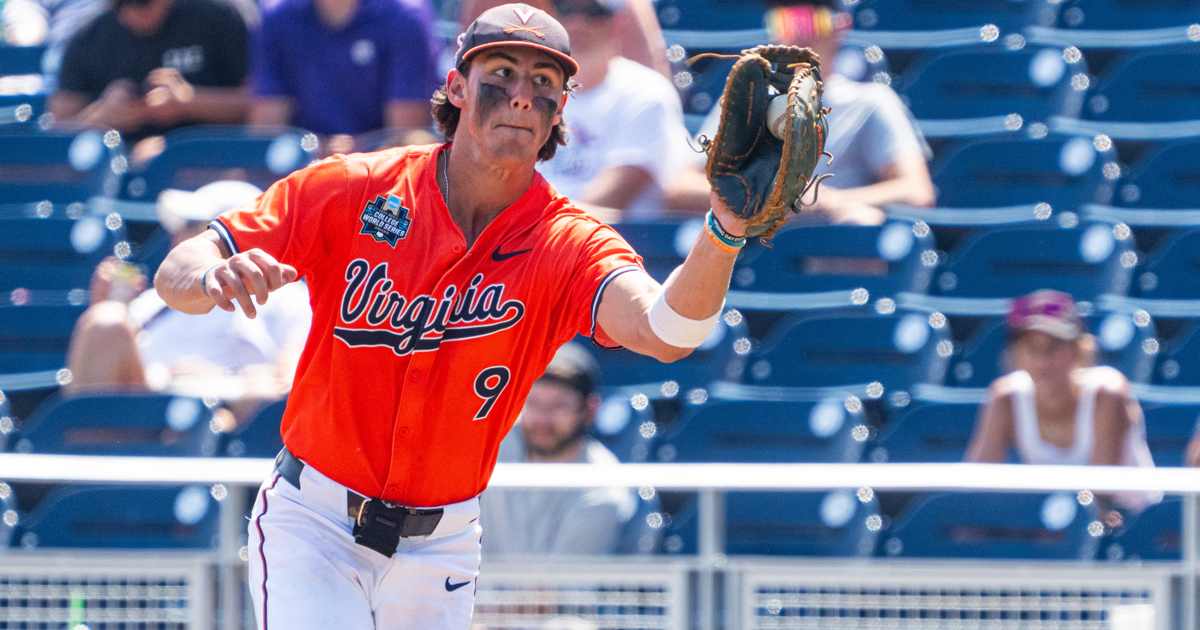
Tennessee baseball made a big splash in the transfer portal on Sunday, picking up a commitment from the top-rated player in the transfer portal as former Virginia first baseman and right fielder Henry Ford made his pledge known to Tony Vitello and the Tennessee staff.
The slugger was on campus the first week the portal officially opened for an official visit ahead of Tennessee’s super regional matchup at Arkansas. Tennessee beat out Mississippi State and Texas for Ford, who is playing in the Cape Cod League this summer.
Ford, who stands in at 6-foot-5 weighing 225 pounds, is draft eligible this summer. He’s currently listed as the No. 73 MLB Draft prosect by MLB Pipeline and No. 70 by Baseball America. He has two years of collegiate eligibility remaining but is a serious draft risk.
Virginia head coach Brian O’Connor left his post to take on the head job at Mississippi State after the season. Ford, along with several of his fellow teammates, entered the NCAA transfer portal.
The Charlottesville, Va. Native, who attended high school in Chattanooga at Baylor School, broke onto the scene as a true freshman in 2024, landing on three Freshman All-American teams after hitting .336 at the plate with 17 home runs, 69 runs batted in and 13 doubles in 61 starts. The home runs and RBI tally were both freshman records for the program.
In 2025, Ford registered a .362 average with 11 home runs, 46 RBI, nine doubles and 42 runs scored across 50 games played. He primarily played first base as a freshman before shifting more towards the outfield as a sophomore. In total, Ford played in 74 games at first base and 34 games in the outfield while at Virginia in two seasons. Ford was named second-team All-ACC following the 2025 campaign as an outfielder.
Baseball Transfer Portal
The 2025 non-graduate transfer portal opened on June 2 and will remain open until July 1. Players must have their name entered in the transfer portal by July 1 if they want to move on, but new destinations do not have to be made by that time.
The Vols have benefited greatly from the transfer portal in recent cycles, reeling in the likes of Chase Dollander (2022), Griffin Merritt (2023), Maui Ahuna (2023), Zane Denton (2023), Billy Amick (2024), Cannon Peebles (2024), AJ Causey (2024), Chris Stamos (2024), Liam Doyle (2025), Andrew Fischer (2025) and Gavin Kilen (2025).
Ford becomes the seventh addition for the Vols via the transfer portal, joining right-handed pitchers Clay Edmondson (UNC Asheville), Mason Estrada (MIT), Bo Rhudy (Kennesaw State), RHP Brady Frederick (ETSU), utility Garrett Wright (Bowling Green) and RHP/OF DJ Newman. Tennessee has also added junior college players such as RHP Matt Barr (SUNY Niagara) and Tyler Myatt (Walters State) and picked up catcher Trent Grindlinger as a late add to the 2025 class in recent weeks.
Tennessee has now lost 13 players to the transfer portal so far: INF Jack Jones, INF Robinson Martin, LHP Bryson Thacker, RHP Brayden Sharp, RHP Austin Hunley, RHP Thomas Crabtree, OF Colby Backus, LHP Ryler Smart, LHP Dylan Loy, LHP Andrew Behnke, RHP Austin Breedlove and RHP/OF Beau Revord.
NIL
How Adam Breneman Wants to Change College Football, at Penn State and Beyond
Adam Breneman views Penn State football now through a uniquely personal lens. Though the foundation remains recognizable (Breneman played for Bill O’Brien and was recruited by Joe Paterno), Penn State’s program is far different than the one he knew in the 2010s. Principally regarding this. “I think the biggest thing that’s changed recently is just, […]
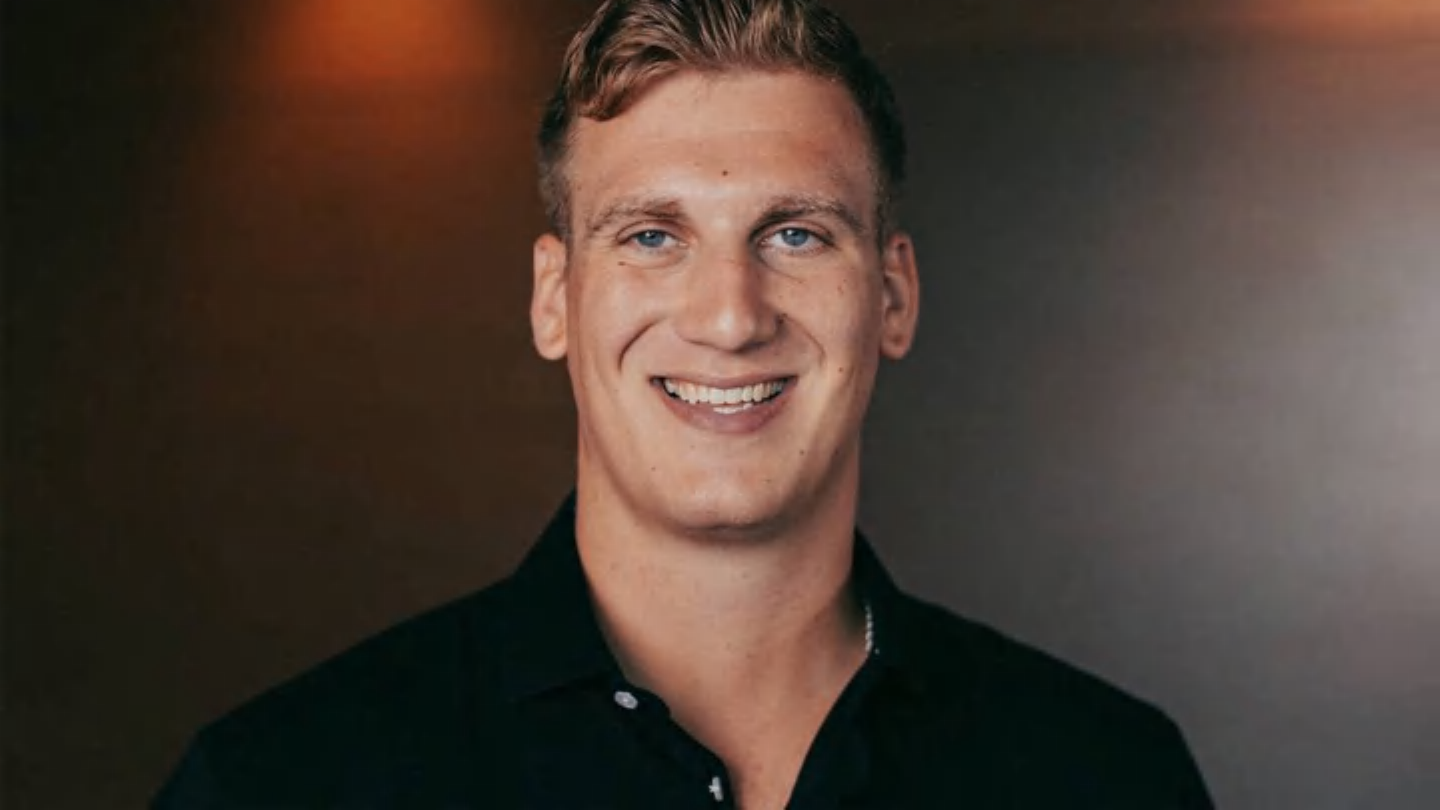
Adam Breneman views Penn State football now through a uniquely personal lens. Though the foundation remains recognizable (Breneman played for Bill O’Brien and was recruited by Joe Paterno), Penn State’s program is far different than the one he knew in the 2010s. Principally regarding this.
“I think the biggest thing that’s changed recently is just, clearly, there’s been a commitment to do whatever it takes to win at the highest level at Penn State,” Breneman said in a recent interview. “And I don’t think that Penn State had that for a while.”
The former Penn State and UMass tight end and Arizona State assistant coach now is a leading young voice in college football media. Breneman, 30, co-founded The College Sports Company, a media enterprise, and is involved with its Penn State brand, State Media.
Breneman interviews the game’s top coaches and players for his podcast, Next Up With Adam Breneman, and has turned social media into a powerful personal platform. Recently, Breneman sat down with Penn State on SI to discuss his twisting career, his relationship with Penn State and his ideas for creating athlete-driven media.
Here’s Part 2 of that interview. Check out Part 1 here.
Question: How is the Penn State football program different than the one you played for?
Adam Breneman: I think the biggest thing that’s changed recently is just, clearly, there’s been a commitment to do whatever it takes to win at the highest level at Penn State. And I don’t think that Penn State had that for a while. I feel like for a long time, Penn State, for a lot of good reasons, had a certain way of doing things. It was, Penn State was different than everybody else. It was maybe more old-school at times, and you have all these pieces that were a little bit outdated, like the facilities and things like that. But if you recruit the right kind of people, those things didn’t matter at Penn State.
In today’s college football, things have changed completely. You need money, you need to compete, you need to keep up in order to win at the highest level. And [athletic director] Pat Kraft and the president [Neeli Bendapudi] and coach [James] Franklin, everyone has invested in what it takes to win at the highest level. If the expectation is that you’re going to beat all these teams, you’d better have the resources that they all have. And I think now, for the first time in a while at Penn State, there’s the resources that it takes to win at the very highest level of college football.
Now it’s time to go do it, as they have in the past, but time to win a national championship. I think now the resources are there. I mean, look at the hire of [defensive coordinator] Jim Knowles and what it took to get that done. Think about keeping all those players on their roster and not having them transfer or go to the NFL. It doesn’t happen without big-time financial resources. That’s a big change that has happened recently at Penn State.
Question: What’s different about the Lasch Football Building from when you played?
Breneman: Everything’s brand new in that thing. Every time you go, there’s new construction being done. Everything is state of the art. There’s sleep rooms, and there’s recovery rooms, and there’s a quarterback-specific training room. There’s just so many things that are really good for players. The facility was good when we when were there, but it’s even better now. And I think that’s a testament to all the resources it takes to win.
Question: How do you try to contribute to that through State Media and The College Sports Company?
Breneman: Our belief is that athletes want to be part of content and want to contribute on social media. If I would have done that when I was playing football, I would have gotten laughed out of the room. But now it’s common, and everyone wants to do it. We wanted to give athletes a place to do that. I think on top of it, every school and collective needed to find ways to make new money, to drive new revenue to pay the players. And we thought that creating a media network, and having these shows and assets that brands and donors can put money behind, was a great way to do that.
So that’s when we started The College Sports Company and State Media. We have networks at Louisville, South Carolina, Tennessee, BYU, schools all over the country. And really the goal is to create great content for the fans, to show the fans a different side of current and former players and to build up the program and the brand. But most importantly, it’s to drive new revenue for the players.
Question: How are you driving revenue for players?
Breneman: We operate like any other media company, where we are selling sponsorships and advertising, a lot of times to local businesses and donors. And then we have deals at each school where a certain amount, usually the vast majority, of the money goes directly to the athletes who are part of everything. So it’s a great way for schools to find ways to use donor money to find new advertisers and for us to find national advertisers. We believe it’s the future of college sports, and the schools and the NIL collectives that really think like media companies and operate like them will be the ones that are successful in driving the most revenue.
Question: How has growth gone with State Media?
Breneman: State Media has been great. We’ve done close to seven figures in revenue, and we have some media networks that are doing north of a million dollars a year in revenue. It’s pretty early, and we’re still kind of adjusting and adapting. We’re working out some new partnerships at Penn State, which I think will help us from a scaling and access and revenue standpoint. So it’s really good. We are excited about it and we think the future is pretty bright. And the cool thing is that the players and the former players are really into it and excited to be part of it.
Question: How has Penn State received the idea?
Breneman: We operate like any other media company would at Penn State. We obviously have kind of unique access but we still get approval for things we’re doing and still run things by the [athletic communications department]. We comply by that standard. I mean, really almost everything we’re doing is extremely positive about the school, obviously. But the one unique thing is, the way we operate is really outside of the direct university partnership so that we can really participate in NIL directly. There are a lot of rules around NIL and who can be part of it. So we’re a separate entity. We’re a for-profit company. We are outside of the athletic department, but we obviously work closely with the school and have a direct partnership with the NIL collective [Happy Valley United].
Question: Who has been your best Penn State interview so far?
Breneman: Coach Franklin has been great. I’ve done two interviews with him, and I think in both he’s been very candid and transparent. I’ve had a lot of people saying, ‘Hey, I haven’t really seen coach Franklin that open and honest before,’ which I think is really cool. And I know Coach enjoys doing it. I thought [offensive coordinator] Andy Kotelnicki was a great interview. He was exciting and entertaining, but I always enjoy talking to the players too. They’re fun.
Question: What has been most illuminating about your interviews with coach Franklin?
Breneman: One of the fun things we talked about is the time when he got to Penn State, when he was still dealing with sanctions. He alluded to how he didn’t know what he was walking into. He didn’t quite get the full story during the interview process of what was going on as they were selling him the job. And I thought he was pretty open about that.
We talked about some of the adversity. He talked about 2016 and the crowd chanting, ‘fire Franklin’ as he walked off the field [at halftime of the Minnesota game]. And then they turn around and win the Big 10 Championship. I thought was really cool. I asked him in my last interview, ‘Do you ever think that the fans will fully appreciate what you’ve done here in your 10 years?’ And he said, ‘No, but no one gives a s—.’ I think it was his exact quote. So I thought that was a pretty neat answer.
More Penn State Football
NIL
Name, Image and Likeness Risks and Insurance in College Athletics
The landscape of college athletics is undergoing a seismic shift with the rise of name, image, and likeness (NIL) rights. As student-athletes gain the ability to monetize their personal brands, a new era of opportunity—and liability—is expanding far beyond the athletes. In addition to the student-athletes, NIL stakeholders include universities, athletic conferences and organizations, sponsors, […]



The landscape of college athletics is undergoing a seismic shift with the rise of name, image, and likeness (NIL) rights. As student-athletes gain the ability to monetize their personal brands, a new era of opportunity—and liability—is expanding far beyond the athletes. In addition to the student-athletes, NIL stakeholders include universities, athletic conferences and organizations, sponsors, and the athletes’ families, among others. Whether the goal is to guard against emerging liabilities or protect the NIL revenue stream itself, stakeholders should consider both traditional and specialty lines of insurance. Here’s what you need to know.
1. What Are NILs?
NIL rights allow college athletes to profit from their personal name, image and likeness—essentially, their brand—while maintaining amateur status. This includes earning income through endorsements, social media, appearances and other commercial ventures. Ever since the US Supreme Court held in 2021 in NCAA v. Alston that NCAA member institutions were free to offer education-related compensation to student-athletes, doors have opened wide for athletes to engage in business opportunities that were previously off-limits, fundamentally altering the collegiate sports economy.
2. The House Settlement: A New Precedent
In May 2025, the landmark $2.8 billion settlement reached in House v. NCAA was finalized, reshaping NIL and revenue-sharing frameworks for college athletics. Often referred to as the “House Settlement,” it resolves multiple antitrust lawsuits and paves the way for direct revenue sharing between universities and athletes. Importantly, this settlement marks a turning point, signaling the NCAA’s acknowledgment of athletes as stakeholders in the multibillion-dollar collegiate sports industry.
3. New Precedent Breeds New Risks for Stakeholders
With new rights come new risks. The expansion of NIL rights and revenue-sharing models introduces complex liability exposures for all parties involved:
- Universities may face management and board-level liability for failing to adequately monitor NIL deals, ensure Title IX compliance, or for violations of the tax code that could jeopardize their 501(c)(3) tax exempt status.
- Athletes risk breaching contracts, violating NCAA or institutional policies, or becoming entangled in disputes over representation and compensation.
- Brands partnering with athletes must navigate reputational risks and ensure compliance with advertising and endorsement regulations.
- Families of athletes, often involved in managing NIL opportunities, may inadvertently expose themselves to tax liabilities or legal disputes if not properly advised.
And, critically for all of the above, consideration must be given to the potential for injury, academic failure, disciplinary suspension or expulsion and transfer, all of which stand to impair or cut off lucrative NIL revenue streams. Interested parties will want to take appropriate steps to protect NIL revenue should a disrupting event occur.
4. Insurance Solutions to Hedge Against Liability
To mitigate NIL-related risk, stakeholders should consider both specialized and traditional insurance products tailored for the NIL era. For example, NFP’s Sports and Entertainment Group offers a suite of coverage options designed to protect athletes, institutions, and affiliated entities, including:
- Permanent Total Disability (PTD) and Temporary Total Disability (TTD): Protects athletes’ future earnings in case of injury or illness.
- Loss of Value (LOV): Covers the financial gap if an athlete’s projected professional value declines due to injury.
- Critical Injury Coverage: Offers lump-sum benefits for catastrophic injuries.
- Group Disability Plans: Customizable for universities, conferences, or NIL collectives, these plans spread risk across multiple athletes and sports.
Traditional lines of insurance—such as directors and officers liability (D&O), commercial general liability (CGL), errors and omissions (E&O), and media liability—can also protect stakeholders against NIL-related liabilities. For example:
- CGL and media liability policies may provide coverage for claims arising from the advertising and use of an athlete’s NIL.
- E&O and D&O insurance can protect institutions and brands from allegations of missteps in negotiating or overseeing NIL agreements.
Insurance is not just a reactive measure—it is a strategic tool that enables stakeholders to participate in the NIL ecosystem with confidence and foresight. As the NIL era continues to evolve, look for the emergence of more specialized insurance products, as well as litigation surrounding the scope and applicability of both traditional and NIL-specific coverage.
Final Thoughts
The NIL era is here, and with it comes a new set of responsibilities. Universities, athletes, brands, and families must work proactively to navigate this evolving landscape. By understanding the risks and leveraging both traditional and tailored insurance solutions, stakeholders can protect their interests while empowering athletes to thrive both on and off the field.
-

 High School Sports3 weeks ago
High School Sports3 weeks agoParents Speak Out As Trans Pitcher Throws Shutout In MN State Quarterfinals
-

 Professional Sports3 weeks ago
Professional Sports3 weeks ago'I asked Anderson privately'… UFC legend retells secret sparring session between Jon Jones …
-

 Health3 weeks ago
Health3 weeks agoOregon track star wages legal battle against trans athlete policy after medal ceremony protest
-

 Professional Sports3 weeks ago
Professional Sports3 weeks agoUFC 316 star storms out of Media Day when asked about bitter feud with Rampage Jackson
-

 Motorsports1 week ago
Motorsports1 week agoNASCAR Weekend Preview: Autódromo Hermanos Rodríguez
-

 NIL3 weeks ago
NIL3 weeks agoPatrick Mahomes in OKC for WCWS, praises NiJaree Canady and Texas Tech
-

 College Sports3 weeks ago
College Sports3 weeks agoFull 2025 Women’s College World Series Finals Schedule
-

 NIL2 weeks ago
NIL2 weeks agoGreg Sankey fires jab at obstruction rule after controversial WCWS call in Texas vs. Texas Tech
-

 NIL3 weeks ago
NIL3 weeks agoTexas Tech Pitcher’s $1M Deal Proves What’s Possible For Women
-
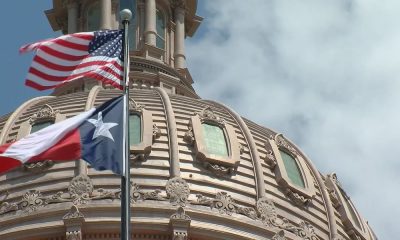
 NIL3 weeks ago
NIL3 weeks agoNew Texas NIL bill signed into law by Gov. Abbott, opening revenue sharing with athletes














 – Marc J. Spears
– Marc J. Spears

















